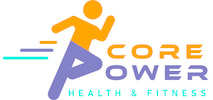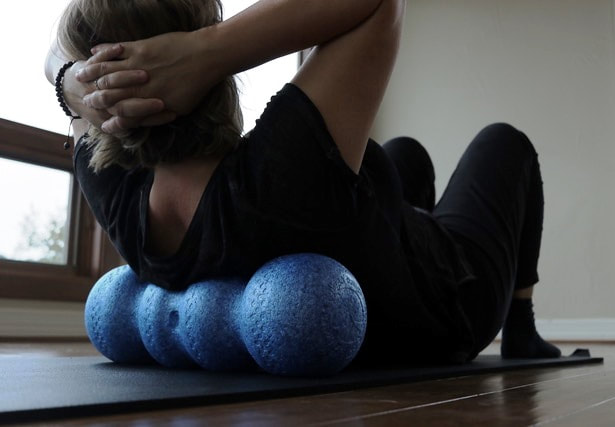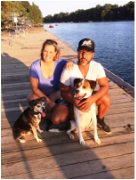STRETCH & REST CARE for the wellness warrior |
|
What would you say is the most important training day? Do you think it’s the day you push it to your max? Nope. It’s the opposite- your recovery day. Do you even have one? You stretch after running. That counts right? No, but close. You need a day of rest from your normal training activities each week. This day will look different for everyone since work (job/school) and training activities (exercise/workouts) vary between people. Does the icing or massage you do to get rid of and decrease your muscle soreness count? It's a good start, but that’s just the tip of the iceberg. Having a day off from training each week is necessary to perform your best, learn new skills and to build strength or stamina. Planning your training around your recovery day is ideal. It’s normal for this to stir up some anxiety. Here’s the good news. This doesn’t mean you have to lie around on the sofa unless you feel that’s what your body needs that day. You can stay active on your recovery day by doing something different than your normal workouts or training. For example, the runner who does yoga on her rest day. Finding a healthy balance between training and rest is important for both optimal brain function and to build muscle strength. Your body needs to be in a relaxed state to self-repair. Workouts cause muscle damage. Whenever you’re training or learning a new skill/information, your brain and body need rest to grow. An athlete who doesn’t make recovery part of their fitness plan is at high risk for burn out and even depression. It’s no different than the workaholic that never takes a vacation. Stress is stress. It can be emotional, mental or physical in nature. Work is stress whether it’s for your job or training for your sport. Your body needs a regular time out each week. Rest will re-build energy and re-balance your mind and body. Rest can be done in short spurts throughout the day, post workout and by taking a recovery day off from training for your sport. BENEFITS OF RECOVERY TECHNIQUES
RECOVERY TOOLS AND TECHNIQUES
Download and test out this free 3 minute Active Recovery Yoga Routine for Runners. Here’s the tricky part to recovery: There isn't a MIRACLE recovery technique for everyone or every sport. Everybody is different. It’s not just what you are putting your body through physically during training. It’s also what is going on emotionally and mentally during training and in the rest of your life. It’s also impacted by what you believe is helping you. What we believe is true for us. That applies to everything not just whether you believe that ice pack is helping your muscle soreness go away faster. WHICH TECHNIQUES ARE BEST? It depends. Some research shows that active recovery or ice baths boost performance for some athletes. It’s usually a combo of techniques and is dependent on many factors: hormones, age, gender, stress level, your sport, your beliefs, etc. What works at age 25 may not work at 40. If you’re female, your hormones change daily but on a monthly cycle. Every day is slightly different. If you’re male, your hormones go through a daily cycle. Every day is more or less the same. WHEN SHOULD YOU DO THEM? It depends. Recovery can be done throughout the day, post workout and by taking a day off from training. You have to know your body, your sport, your work load, and emotional stress level to decide what’s most beneficial for you. HOW OFTEN? It depends. :) You need to test different techniques by listening to your body before, during and after you train.-ultimately evaluating your overall performance. It’s ideal to test new techniques between seasons or before competitions to see how your body responds. WHERE DO I START?It's complicated so... In order to learn how to balance fitness and fatigue, you have to test, train, then tune in to your body to see how it responds. Your body knows best! Here are a few examples of how you can easily add rest and recovery to your training plan:
Want more help getting started? Our next blog post will go through the 3 steps to help you make a recovery plan that increases your strength and energy while decreasing stress and risk for injury. In the meantime, you can download and test out this 3 minute Active Recovery Yoga Routine for Runners. It's just in time for Spring Training Season! Your body knows best. What you believe matters. We grow when at rest. Not by pushing harder. OVER TO YOU: What's your favorite recovery tool? If you haven't tried any, which one are you going to test out this week? Tell us in the comments. Team Core Power
1 Comment
Mindy
3/8/2018 09:46:08 pm
Massage
Reply
Leave a Reply. |
Mollie Miller, PT
|
TERMS OF USE PRIVACY POLICY
Core Power Health & Fitness, Inc. does not provide medical advice. Consult a licensed physician prior to beginning any exercise or nutrition program.
Copyright © 2015 Core Power Health & Fitness Inc.
Core Power Health & Fitness, Inc. does not provide medical advice. Consult a licensed physician prior to beginning any exercise or nutrition program.
Copyright © 2015 Core Power Health & Fitness Inc.



 RSS Feed
RSS Feed